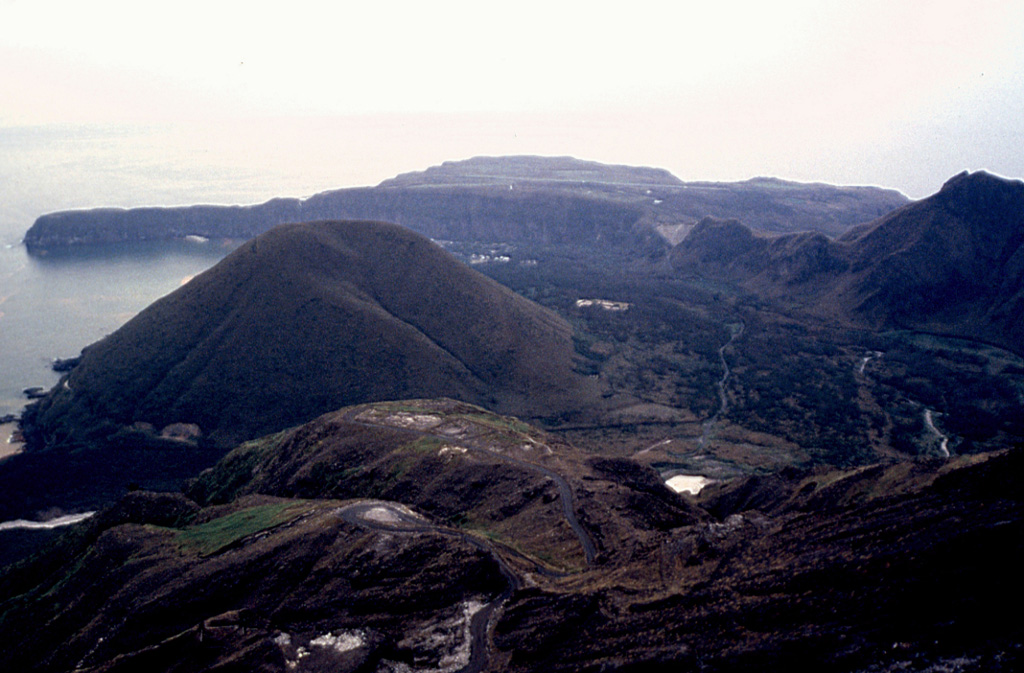Image GVP-08757

Kikai is a mostly submerged 19-km-wide caldera S of Kyushu that was the source of one of the world's largest Holocene eruptions about 6,300 years ago. Pyroclastic flows traveled across the sea for a total distance of 100 km and devastated southern and central Kyushu. This view from near the summit of the post-caldera Iwodake cone shows the W rim of Kikai caldera forming the peninsula (upper left) behind the Inamuradake scoria cone.
Photo by Yasuo Miyabuchi, 1996 (Forestry and Forest Products Research Institute, Kyushu).
![]() This image is made available under the Creative Commons BY-NC 4.0 license terms.
This image is made available under the Creative Commons BY-NC 4.0 license terms.
Keywords: caldera | scoria cone

Kikai
